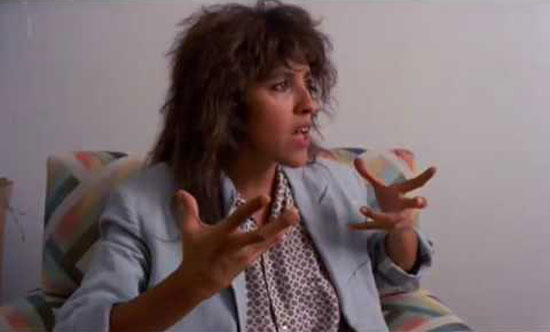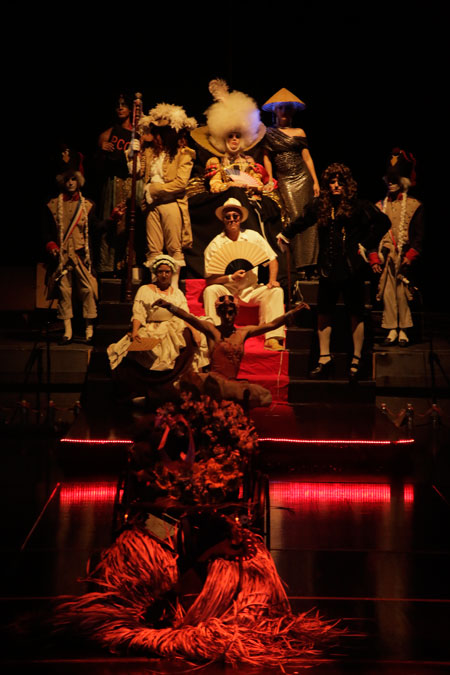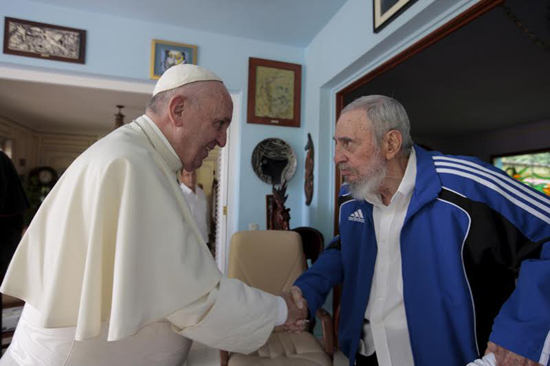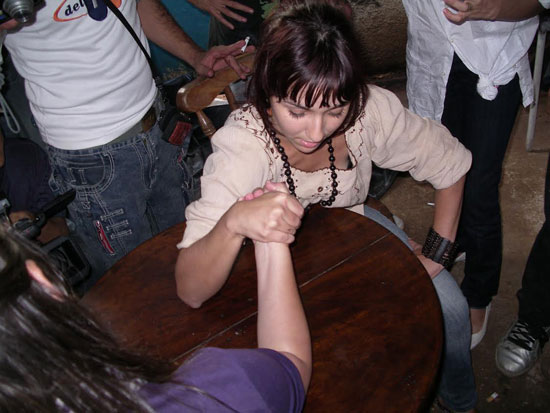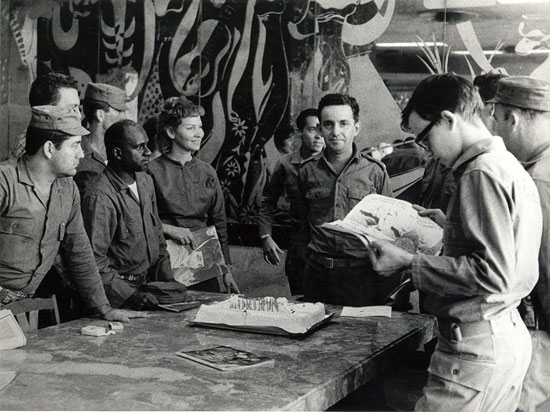1.
The funniest moment of the only movie that Caetano Veloso ever made, O Cinema Falado (1986), is a scene in which Brazilian actress Regina Casé parodies the gestures and body language of Fidel Castro.1 Within the collage of an avant garde film-essay, the parody is a humorous parenthesis that alternates between quotes from Heidegger, Guimarães Rosa, Thomas Mann, Gertrude Stein, combining with popular dance and music scenes, the visual grammar of Cinema Novo, and an entire paraphernalia of ju...
Issue #68
December 2015
With: Coco Fusco, Ernesto Hernández Busto, Danilo Maldonado Machado (El Sexto), Iván de la Nuez, Juan Carlos Cremata Malberti, Orlando Luis Pardo Lazo, Sandra Ceballos, Enrique Colina Alvarez, Lázaro Saavedra, Antonio José Ponte, and Amaury Pacheco del Monte
In the spring of 2009, during the 11th Havana Biennial, a recent art school graduate named Hamlet Lavastida stenciled a quote from a famous speech by Fidel Castro on the steps of Galería Habana and called his piece Intellectuals Without Words. The quote reads:
The existence of an authority in the cultural sector does not mean that one should worry about abuses by that authority. Who would want, or who would desire for this authority not to exist? If we continue with that line of thought we ...
View List
View Grid
11 EssaysDecember 2015
Valle Grande Prison
From “the (solitary confinement) cell”
September 16, 2015
Where I am there is little light. I walk around in my underwear because I don’t want to wear the regular prisoner’s uniform.
At night they give me the mattress for five to six hours.
I only drink water, and there will be no possibility for you all to reply to this letter because I don't want to “burn” my contacts.
Thanks to Lia, Gorki, Antonio, and everyone for helping my mom negotiate things.
Tha...
1.
Fatherland or Death. With the Revolution Everything, Against the Revolution Nothing. The Future Belongs Entirely to Socialism. The Most Beautiful Land (according to Columbus). The First Free Territory in the Americas (according to Fidel) …
These absolutes have not disappeared from propaganda or persuasion, from the dreams or nightmares of Cubans, but it is good to know that this Caribbean island has for some years now slowly abandoned “Life” in capital letters, as well as the bombastic ...
First off, I apologize for speaking in the first person.
I usually do not respond, at least publicly, to any critic or spectator regarding the details of the “machinery” of our productions. I have always thought, like García Marquez, that what I have tried to say can be found in what I did. Instead, I learn much more by listening to the different interpretations of what I do, which at times is the result purely of artistic intuition or craft, based on the experience of numerous collective wor...
Finally he had been left alone. Stooped, his perfect Greek profile had now become like that of a vulture. A kind of unkind condor. Carrion claws dripping with his own feces, a layer of bacteriostatic containment. I’m talking about biology. About beauty, that is. And I am, of course, talking about him.
There is a certain sense of classical wisdom in the birds of prey. Something noble in their adapted gestures of eating cadavers. A symptom that life never ends. These are cynical cycles. A circu...
Military and cultural officials are not the only ones to blame for the intense scrutiny of artists and the deliberate acts of violence against them that erase them from state media and other systems of dissemination, legitimation, and history. Nor are the art critics and curators the only arbiters who evaluate or devalue, who elevate or bury artists’ work. Worst of all are the searing, inexcusable verdicts handed down by the artists themselves. They pit themselves against one another as they war...
During the past fifty-six years, censorship in Cuba of works of art and the cultural practitioners who produce them—justified as a defense of the Revolution—has paradoxically resulted in a boomerang effect against the political prestige of the revolutionary process. From the beginning, that revolutionary process encouraged and developed the artistic expressions that underpin and reinforce our national identity, ensuring the continuity of the positive legacy of this time in our history. If we wer...
“Art is a santería altar that sometimes needs to be fed violations of civil rights.”
—Tata Watashi
Tania has taken advantage of a specific situation to define a problem by means of an attempt at an “aRtivist” action. She knows perfectly well that there are only two answers to her project: “yes” or “no.” Either answer will provide good results that will beef up her artistic CV more than advancing civil rights in Cuba. She knows the game, and she sets it in motion; others have no choice ...
The contemporary art biennial that took place this past summer in Havana has been called the “Biennial of the Thaw.” The US market tuned in, and many Cuban artists living abroad returned to the island to exhibit their works. With the legitimacy that the label of contemporary art accords to certain gestures, there was an Obama look-alike strolling through the city, a sandy beach right in the middle of the Malecón, and a Facebook “Like” icon the size of an official government propaganda billboard....
Every presence poses a conflict,
he said one afternoon through his mysterious block
of teeth, confidently and methodically chewing …
Extension: estranged ...
What Alamar is today—that estranged extension—springs from the La Noria ranch owned by the Velazco family. La Noria, “the watermill,” a word which itself embodies cycles, a machine whose buckets extract pieces of history chained to time, as the sound of its toothed wheel leaves us a howl.
A municipality to the east of Havana, i...

